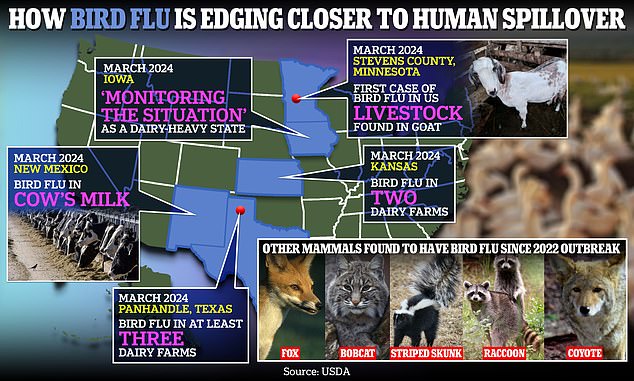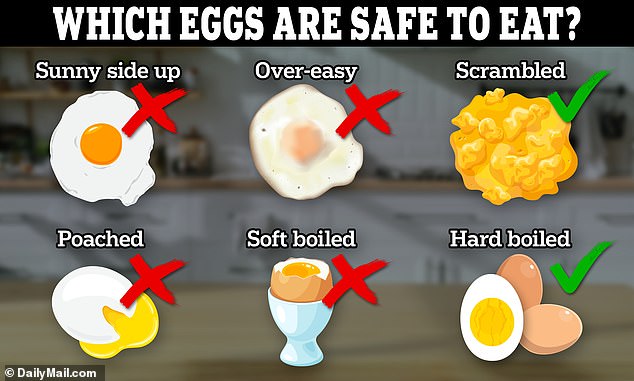nivek
As Above So Below
Now bird flu is detected in COW'S MILK at dairy farms across US... as virus edges closer to human spillover
Bird flu has been detected in dairy cows and their milk on farms in Texas and in Kansas for the first time ever.Tests revealed that an unknown number of cows were positive for Type A H5N1, the strain behind the largest ever outbreak in animals and has killed dozens of people globally since 2022.
The virus was also found to be affecting older dairy cows in New Mexico while Iowa, another dairy-heavy state, is monitoring the situation.
Farmers first noticed cows falling ill three weeks ago with symptoms of lethargy and loss of appetite, then they began to produce significantly less milk.
Milk and nasal swabs then tested positive for the virus. 'We hadn't seen anything like it before. It was kind of like they had a cold,' said Texas Department of Agriculture Commissioner Sid Miller.
Tests revealed that an unknown number of cows have tested positive for bird flu Type A H5N1 in Texas, Kansas and New Mexico. Iowa is currently 'monitoring the situation' as it is also a dairy-heavy state. It comes after a goat in Minnesota tested positive last week. Bird flu has also been found in foxes, bobcats, striped skunks, raccoons and coyotes since the 2022 outbreak.
(More on the link)

.




